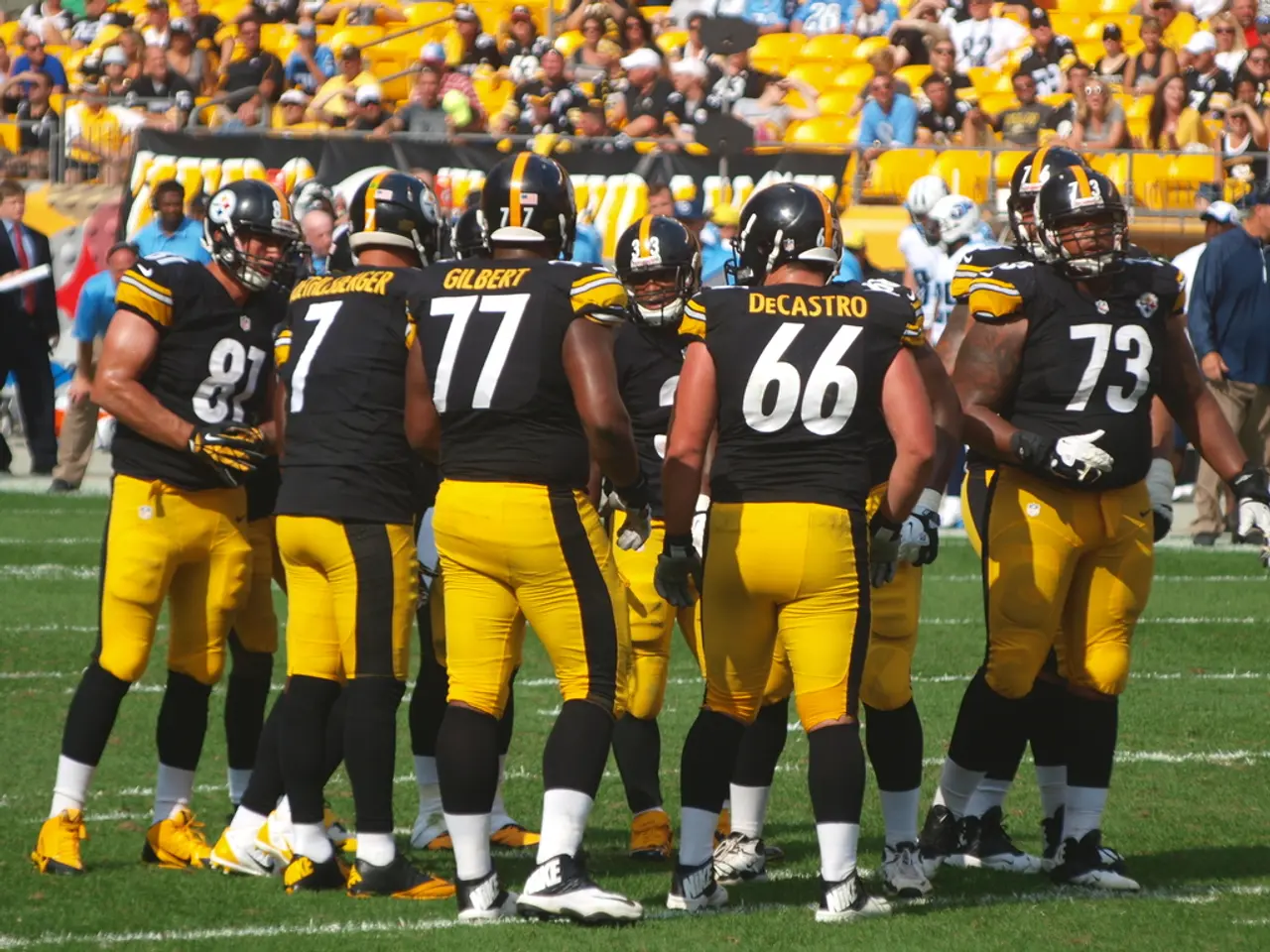Sports and Video Games: Comparative Perspectives on Enjoyment and Engagement
In the ever-evolving world of entertainment, the lines between sports and video games are becoming increasingly blurred. This convergence is not just a passing trend, but a significant shift in the way we consume and engage with content.
Recently, Netflix partnered with Infillion to promote Sonic series ads inside NHL arenas, earning awards such as the Creative Media Awards and ThinkLA IDEA Awards. This move is a testament to the growing synergy between the two industries.
Gamers are spending more time consuming gaming content than playing the games themselves. According to recent statistics, gamers spend an average of 8.5 hours per week watching gaming videos on platforms like Twitch and YouTube, surpassing their average playing time of roughly 7.4 hours per week. This trend mirrors the way fans consume traditional sports, with many tuning in for pre-game shows, analysis, and highlights.
Streaming media platforms like ESPN+, Twitch, and YouTube Gaming are at the forefront of this convergence, providing broad coverage for both sports and video games. Esports, in particular, have grown strong, with many competitive gaming events featuring numerous sponsor logos similar to NFL or NBA broadcasts.
The similarities between sports and video games extend beyond consumption habits. Both athletes and gamers need strategic thinking and adaptability to win. Players in both domains adapt their strategies instantly based on real-time play, a skill that is increasingly crucial in today's changing consumer behavior online where ad targeting relies heavily on digital cookies tracking player interests across platforms.
Both physical sports and digital gaming are reaching millions of fans through broadcasting platforms like ESPN, Twitch, and YouTube. Large crowds attend both sports matches and gaming events, with the League of Legends World Championship in 2024 drawing over 20,000 fans at London's O2 Arena and peak views of over 6.91 million online.
Examples of sports and video games that share similarities in competition, teamwork, and fan support include traditional team sports like football and basketball and their video game counterparts such as Madden NFL, NBA 2K, and esports titles like League of Legends, Dota 2, and Counter-Strike: Global Offensive. These games feature competition structured around seasons, playoffs, and team management modes that replicate real-world league formats, encouraging teamwork and strategic planning comparable to actual sports franchises.
Esports teams undergo training, strategizing, and use communication tools like voice chat to coordinate gameplay, much like traditional sports teams practice and develop synergy. Both domains engage fans through major events—regional qualifiers, world championships, and league seasons—drawing significant attention, large prize pools, and dedicated communities.
In the world of esports, colleges are now offering scholarships ranging from $1,000 to $6,000 per gamer, mirroring the sports scholarships offered in traditional universities. This shift in education reflects the growing recognition of esports as a legitimate career path, with over 200 U.S. colleges now having competitive esports programs.
As the industry continues to grow, we can expect to see more innovations that blend the physical and digital worlds. For instance, new forms of sports like TGL arena golf will mix real-life play with flashy visuals and fast pacing, similar to gaming environments.
In conclusion, the convergence of sports and video games is transforming the way we consume and engage with entertainment. The similarities between the two industries are striking, from the competition structures and teamwork required, to the fan engagement and monetization strategies. As technology continues to evolve, we can expect this convergence to deepen, opening up new opportunities for both industries.
- The growth in the gaming industry has led many sports fans to spend more time watching gaming content, such as esports events and Twitch streams, than actually playing games themselves, emulating the way traditional sports fans consume pre-game shows, analysis, and highlights.
- Moving forward, we can anticipate continued innovations in the world of entertainment, blending physical sports with digital environments, for instance, with the development of new sports like TGL arena golf that incorporate flashy visuals and fast-paced gameplay, similar to video games.








